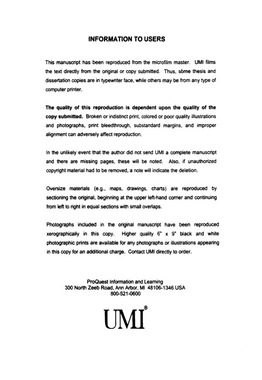| dc.contributor.advisor | Wieder, D. Lawrence, | en_US |
| dc.contributor.author | Pogue, Alan Lewis. | en_US |
| dc.date.accessioned | 2013-08-16T12:18:27Z | |
| dc.date.available | 2013-08-16T12:18:27Z | |
| dc.date.issued | 2002 | en_US |
| dc.identifier.uri | https://hdl.handle.net/11244/405 | |
| dc.description.abstract | How does communication work in the process of group identity creation and maintenance? This dissertation uses a social construction of reality orientation to seek the verbal, nonverbal, and ritual communication elements that work in the process of identity development in distinct communities. Ethnography and focus groups were used to collect data on two congregations of the Churches of Christ, one in the Midwest, and one in the South. The specific communication activities observed were those occurring in the context of the weekly worship assemblies. A complete ethnographic account of representative assemblies in each congregation is presented. This account provides the material for analysis of verbal, nonverbal, and ritual elements of communication. Verbal elements identified that relate to identity creation and maintenance are: terms, stories and reframes. Nonverbal elements identified are: proxemics, haptics, kinesics, chronemics, artifacts, environment, facial expressions, and physical appearance. Seating behaviors were found to be a powerful indicator of member identification with the group. Ritual elements consist of the verbal and nonverbal elements organized in a meaning-rich context of repetitive behaviors that serve to make abstract metaphysical concepts a reality for the worshippers. This reality shared by the worshippers appears to reinforce their concept of community. The traditions that develop in repetitive worship rituals are important to the maintenance of group identity. | en_US |
| dc.description.abstract | The last chapter of this dissertation compared the observations to existing theories of the ways identity develops in groups. The theories include Giles' Communication Accommodation Theory, Tajfel's Social Identity Theory, and Turner's Self-Categorization Theory. A model of a communication system operating in the weekly worship assemblies was described. The system is theorized to consist of the basic verbal element "terms" existing with a positive or negative value. These terms often occur within the text of a narrative or "story." These verbal elements occur within the context of nonverbal elements that add positive or negative values. These elements, organized into repetitive ritual acts with specific meanings, enable the process of group or collective identity creation and maintenance. This system exists in one of two states: stable or unstable. The stable state is characterized by meaningful traditions. The unstable state is characterized by changing traditions. This model should be applicable to other religious groups in addition to the congregations of the Churches of Christ. Prescriptions for church leaders apply the model to specific ways of developing a common group identity. A Glossary of terms with connotations specific to the religious group Churches of Christ is included in Appendix C. | en_US |
| dc.format.extent | xi, 175 leaves : | en_US |
| dc.subject | Psychology, Social. | en_US |
| dc.subject | Group identity Case studies. | en_US |
| dc.subject | Religion, General. | en_US |
| dc.subject | Speech Communication. | en_US |
| dc.subject | Religious gatherings Churches of Christ. | en_US |
| dc.title | Communicating identity: Communication processes in the development of group identity through congregational worship rituals. | en_US |
| dc.type | Thesis | en_US |
| dc.thesis.degree | Ph.D. | en_US |
| dc.thesis.degreeDiscipline | Department of Communication | en_US |
| dc.note | Adviser: D. Lawrence Wieder. | en_US |
| dc.note | Source: Dissertation Abstracts International, Volume: 62-12, Section: A, page: 3997. | en_US |
| ou.identifier | (UMI)AAI3034888 | en_US |
| ou.group | College of Arts and Sciences::Department of Communication | |
